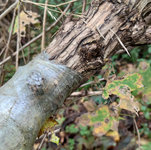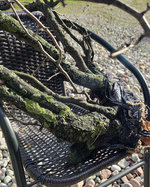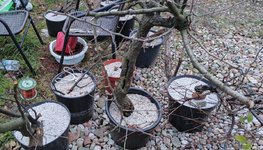jerzyjerzy
Mame
I created a number of air-layers around April, May and as late as July.
They are on different species that are located in the 20-kilometer radius around my place in random locations, and I have no control over their environment. I only watered them sporadically during Summer.
All of them are pretty long branches/trunks that I will have to collect as basically stumps with roots.
The point is, I am not convinced the roots on the layers are strong enough to support the stumps yet.
I am trying to consider what will be the best time to harvest them considering their physiology - should it be now, or maybe November when most of the processes will stop (for example, bare-rooted grapes and trees are planted at this time), or maybe in early Spring when they start showing new growth.
I know that roots in air-layers can survive Winter here, I tried it before.
My point is, I will have no control over them for months, and I am not really sure what is the safest bet for them to survive.
Do you have any opinions about timing in this case?
Should I harvest them in the Fall, risking that they will be too weak, or wait till Spring, risking the roots will dry out and die without my care?
They are on different species that are located in the 20-kilometer radius around my place in random locations, and I have no control over their environment. I only watered them sporadically during Summer.
All of them are pretty long branches/trunks that I will have to collect as basically stumps with roots.
The point is, I am not convinced the roots on the layers are strong enough to support the stumps yet.
I am trying to consider what will be the best time to harvest them considering their physiology - should it be now, or maybe November when most of the processes will stop (for example, bare-rooted grapes and trees are planted at this time), or maybe in early Spring when they start showing new growth.
I know that roots in air-layers can survive Winter here, I tried it before.
My point is, I will have no control over them for months, and I am not really sure what is the safest bet for them to survive.
Do you have any opinions about timing in this case?
Should I harvest them in the Fall, risking that they will be too weak, or wait till Spring, risking the roots will dry out and die without my care?















